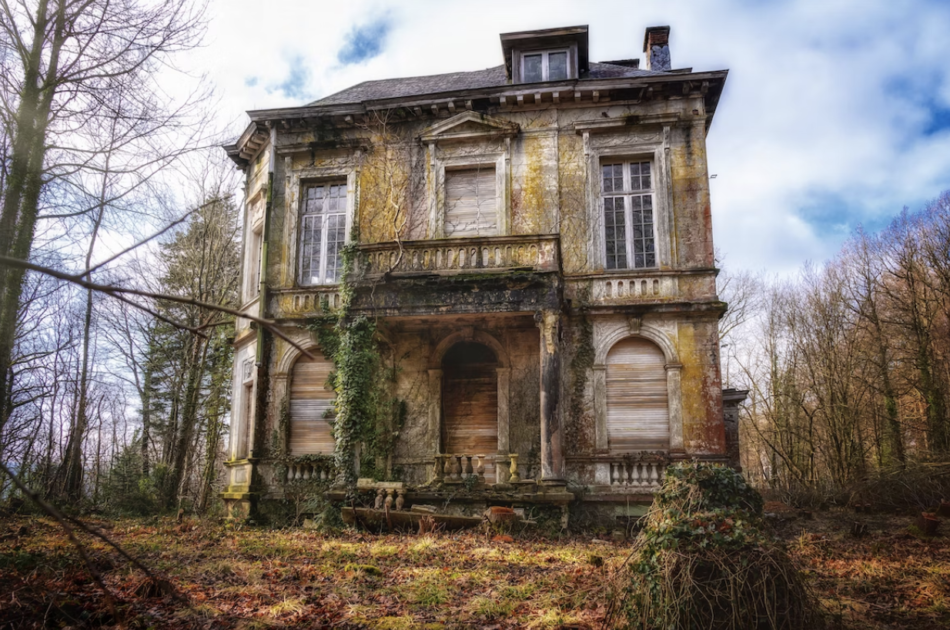
If you have your heart set on buying an older home, perhaps because you want to fix it up and resell it, or because you want to live in a property that has more charm and character than something modern, it’s important that you understand the issues that come with the purchase.
If you don’t do your homework first, you might end up with a property that isn’t worth the money you spent on it. You might also be forced to spend more money than you can reasonably afford if there are any issues that prove costly.
With this in mind, here are the issues that you need to look out for when buying an older property.
#1: A deteriorating roof
If the roof of the house hasn’t been well-maintained, it could cause you major problems when you later move into the property, such as water leakage and cold drafts.
Signs of a deteriorating roof can include:
- Missing or decaying shingles
- Bowing gutters
- Water stains on the walls and ceiling
- Pools of water in the attic
- Mold and damp
The weather is a major factor of roof damage, but improper installation can also be the reason for any problems.
If you spot any issues, especially signs like missing shingles or water leaks, call a professional home inspector to assess the state of your roof. It’s important to spot potential problems early to prevent further damage. Once they’ve completed their inspection, ask them to provide a detailed report and outline the repairs that are needed, ensuring the longevity and safety of your home.
#2: Issues with the foundation
Unfortunately, foundation issues are very common in older homes. Issues often arise because of outdated techniques used to create the foundation but wet soil, tree roots, house pests, and natural wear and tear can also create problems.
Signs of a failing foundation can include:
- Uneven floors
- Doors that won’t close properly
- Cracks in the interior and exterior walls
- Sagging floorboards
A house with foundation issues isn’t necessarily unsafe to live in but your life will be made uncomfortable. For one thing, you may have to find ways to stop bugs from entering the house if there are any cracks in the walls as you could be inundated with cockroaches and termites if you don’t make repairs or hire pest control.
If you do spot any problems before buying the property, ask a structural engineer to assess the damage. If they suggest the house is a potential money pit, it might be wise to consider another property if you can’t afford to pay for the repairs to the foundation damages.
#3: Outdated electrical systems
If the electrical system in the house is over 40 years old, it’s unlikely to be code-compliant. Today’s homeowners use way more electrical items than homeowners in the past, which is why modern houses are fitted with electrical systems that fall in line with modern ways of living.
Signs of outdated electrical systems can include:
- Burning smells from the outlets
- Flickering lights
- A circuit breaker that trips often
- 2-prong outlets
- Frayed wires
- Scorch marks around the outlets
- Crackling, sizzling, and buzzing sounds
If the property’s electrical system is outdated, you will need to call in an electrician to rewire the house and replace the circuit breaker and outlets. If you don’t, both your life and the property itself could be in danger of serious harm.
#4: Hazardous building materials
Properties built before 1978 often contain asbestos and lead-based paint, both of which can be dangerous to your health.
Before moving into the property, you will need to pay somebody to delead the house and remove the asbestos.
Spotting the signs of asbestos and lead-based paint can be difficult as they are often invisible to the naked eye. However, if you know the property was built before 1978, there is a good chance that both of these hazardous materials exist. As such, you should contact a specialist firm that can assess the property for these materials and remove them.
#5: Plumbing issues
Pipes start to corrode and decompose as they get older and when they do, they are in danger of bursting. There is also the danger of lead poisoning in the water supply if the pipes in the property are made from lead.
Signs of plumbing issues can include:
- Slow water drainage
- Low water pressure
- Discolored water
- Faulty fixtures
- Water leakage
If you spot any of these signs, you should hire a certified plumber to inspect the plumbing and replace the pipes in the property.
Finally
The safety of yourself and your family matters so if you do decide to move into an older property, you need to carry out all the necessary checks before you finalize the purchase.
After moving in, you need to look after your older home by making the necessary repairs as this will prevent further damage to your property.
Once these repairs have been done, you should be able to enjoy your home for many years to come. Unless, of course, you are fixing it up for resale, in which case, you will be able to profit from the purchase if the repairs have added value to the property.
